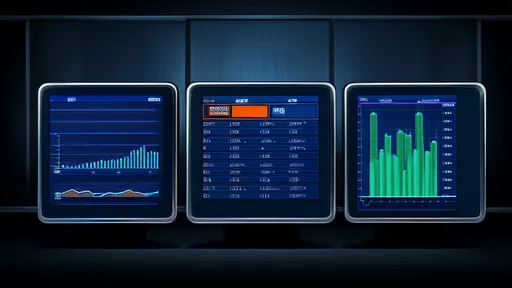The maintenance of automated test scripts remains one of the most overlooked yet critical aspects of modern software development. While teams invest heavily in creating automation frameworks, the long-term costs associated with script upkeep often catch organizations off guard. As applications evolve, so too must their corresponding test suites, leading to a hidden financial burden that can undermine the very efficiency gains automation promises to deliver.
Understanding the true cost of test maintenance requires looking beyond initial implementation. When teams first adopt test automation, enthusiasm runs high as manual testing hours drop dramatically. However, this early success frequently masks the compounding expenses that emerge when test scripts begin aging. Flaky tests, false positives, and brittle locators gradually erode confidence in automation results while consuming increasing engineering time.
The most sophisticated organizations recognize that script maintenance follows a nonlinear cost curve. Minor application changes might only require superficial test updates early in a product's lifecycle. But as systems grow more complex with interconnected dependencies, a single modification can trigger cascading failures across hundreds of test cases. This phenomenon explains why many teams find themselves dedicating 40-60% of their automation effort to maintenance within just two years of implementation.
Environmental factors play a substantial role in determining maintenance overhead. Test suites running against constantly changing third-party APIs or cloud infrastructure tend to demonstrate particularly high volatility. The rise of microservices architectures has further complicated matters, as distributed systems introduce additional points of failure that automated checks must accommodate. Teams working in continuous delivery environments face the greatest pressure, where test maintenance becomes a daily activity rather than periodic upkeep.
Script design decisions made during test creation reverberate through the entire maintenance lifecycle. Poorly structured tests with hardcoded values and duplicated logic become maintenance nightmares. Conversely, well-architected test suites employing the page object pattern or similar abstraction layers demonstrate remarkable resilience to application changes. The difference in long-term maintenance costs between these approaches can span an order of magnitude.
Quantifying maintenance expenses involves tracking several hidden cost centers. Engineer hours spent diagnosing flaky tests, updating selectors, and rewriting obsolete scripts represent the most visible component. Less apparent are the opportunity costs when high-value automation engineers get stuck in maintenance loops instead of developing new capabilities. There's also the organizational toll of delayed releases when test failures block deployments unnecessarily.
The technology landscape offers both challenges and solutions to the maintenance burden. While modern applications built on dynamic frameworks like React or Vue.js increase test fragility, innovations in AI-powered test maintenance tools show promise for reducing overhead. Visual testing platforms and self-healing locators attempt to address some root causes of maintenance pain, though these solutions introduce their own learning curves and costs.
Effective maintenance cost management begins with acknowledging that 100% automation coverage represents an anti-pattern. Strategic teams focus automation efforts on stable, high-value test scenarios while accepting that some areas will always require manual verification. This balanced approach recognizes that every automated test represents an ongoing maintenance commitment rather than a one-time investment.
Forward-thinking organizations now treat test maintenance as a first-class engineering discipline rather than an afterthought. They budget maintenance time explicitly during sprint planning and measure technical debt in their test suites with the same rigor as production code. Some have established dedicated test maintenance rotations to prevent knowledge silos and ensure sustainable upkeep practices.
The most sustainable automation strategies incorporate maintenance cost forecasting from the outset. By modeling expected script lifespan, change frequency, and update complexity during test design, teams can make informed decisions about what to automate. This proactive approach helps avoid the common pitfall where automation costs eventually exceed the value it delivers.
As the software industry matures in its approach to test automation, maintenance cost models are gaining recognition as essential planning tools. These models help teams transition from reactive script fixing to predictive maintenance scheduling. Organizations that master this discipline discover they can sustain their automation investments over multi-year periods while continuing to realize substantial efficiency gains.
The evolution of maintenance cost modeling reflects broader trends in software quality engineering. What began as simple metrics like "tests maintained per engineer" has grown into sophisticated analyses weighing business risk, test criticality, and opportunity costs. This maturation signals that test automation is finally being treated with the operational seriousness it deserves as a long-term strategic asset rather than a tactical shortcut.

By /Jul 11, 2025

By /Jul 11, 2025

By /Jul 11, 2025

By /Jul 11, 2025

By /Jul 11, 2025

By /Jul 11, 2025

By /Jul 11, 2025

By /Jul 11, 2025

By /Jul 11, 2025

By /Jul 11, 2025

By /Jul 11, 2025

By /Jul 11, 2025

By /Jul 11, 2025

By /Jul 11, 2025

By /Jul 11, 2025

By /Jul 11, 2025

By /Jul 11, 2025

By /Jul 11, 2025